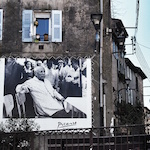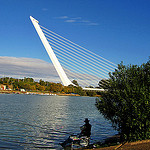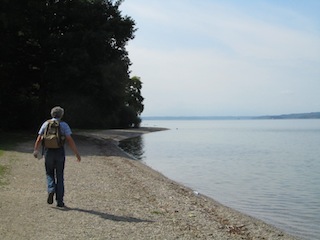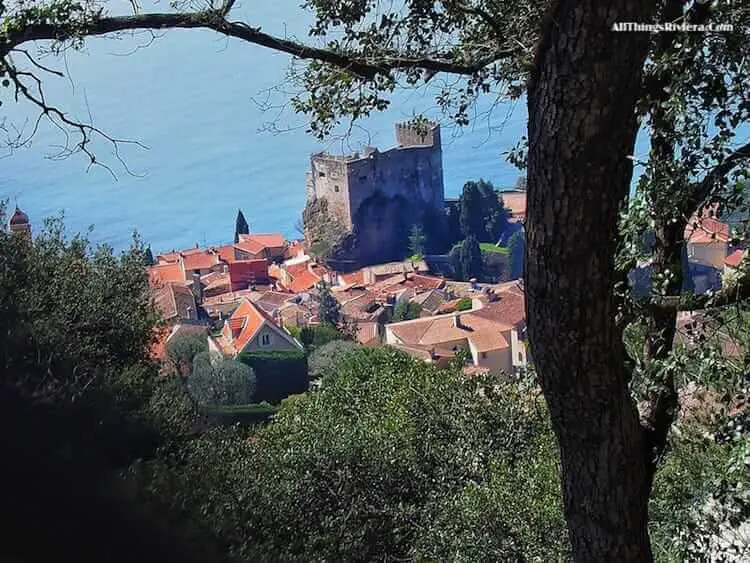In the final instalment of our Sachsen-Anhalt Trilogy, we will tell you what to do and where to go for a scenic and interesting walk in the state capital of Magdeburg.
Magdeburg does not sit in the first row of popular German city destinations, not even in the second row, but chances are that most visitors of Sachsen-Anhalt will at some stage spend some time there, if only to take a stroll out of the central train station while waiting for their connection.
At first sight, Magdeburg’s city centre does not look very promising: half of it is full of cookie-cutter high-rise buildings while the other half – what has been left over from the ancient GDR building fabric – is undergoing major reconstruction work, presumably to make room for more cookie-cutter high-rise buildings.
Our tips for trips in Magdeburg

But you should not despair. The area north of the central station certainly looks grim, but things improve further down south.
Around Hasselblattplatz, you can enjoy some real urban atmosphere, and on your way there, you will spot some of the town’s main sites such as the cathedral …

… and the Grüne Zitadelle or simply the Hundertwasserhaus, named after its eccentric architect Friedrich Hundertwasser who is quite a star in the German-speaking world although he still stands to be discovered abroad.
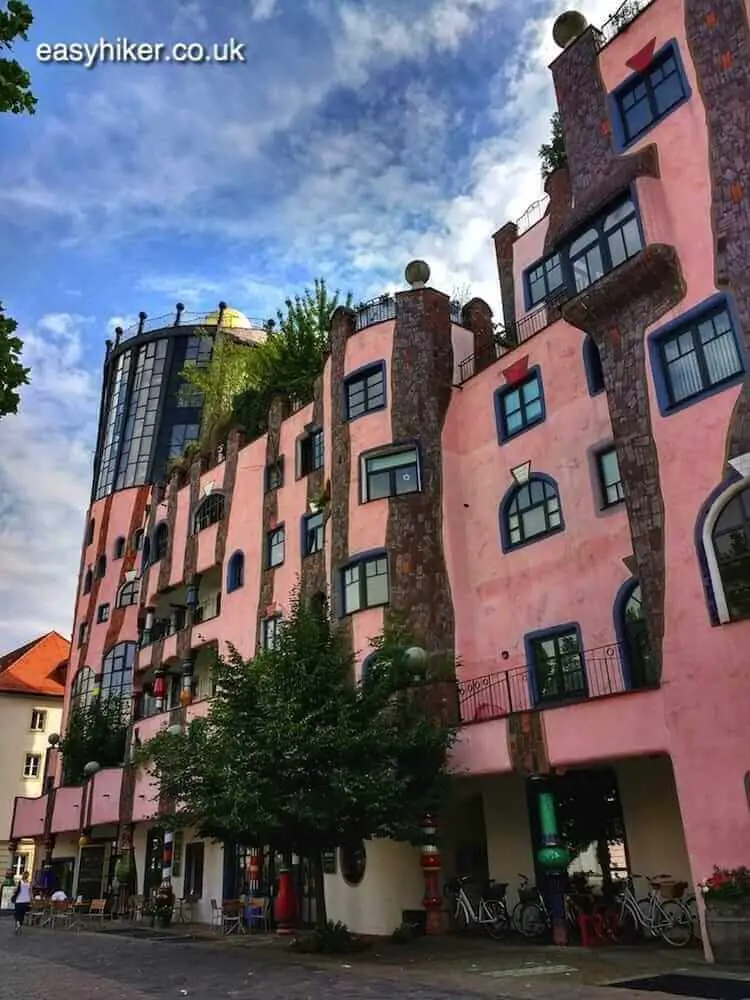
One would probably not want to live in a city where every house had been built by Hundertwasser – Roger Rabbit’s Toontown springs to mind – but to spot one of his buildings in a drab row of 1960s multi-storey tenement blocks never fails to make the heart jump for joy.
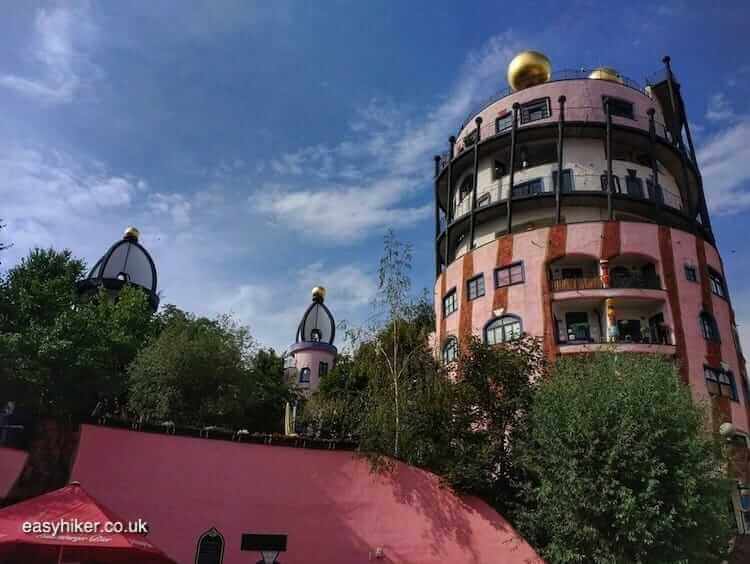
Here’s another one of our tips for trips in Magdeburg: If you have the time for a short urban hike, we offer two suggestions. One is to take tramway line 8 or 9 from the town’s high street (called Breiter Weg) to Neustädter See.
This is a pleasant city lake, compact enough to walk around in roughly two hours, and you can pretty much expect to have the circular trail around the lake all to yourself, …
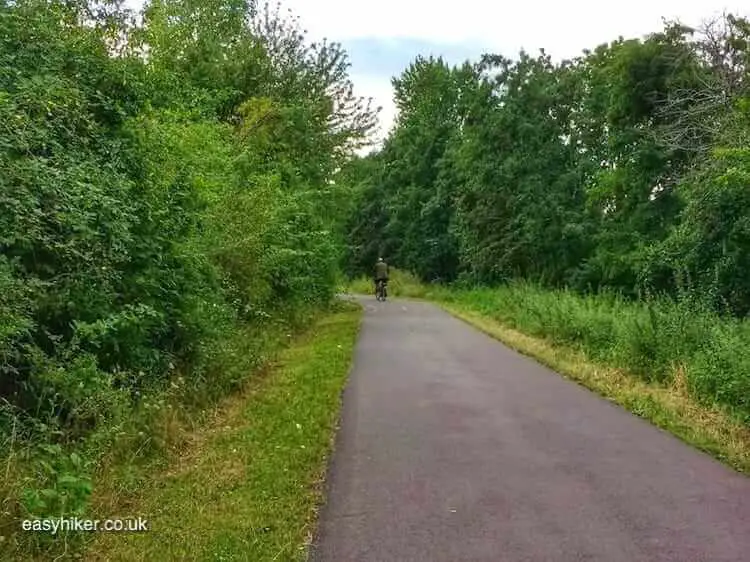
… enjoying scenic views on your right hand side (if you proceed clockwise) or, occasionally, stepping into one of the numerous footpaths through the bushes for a closer look.
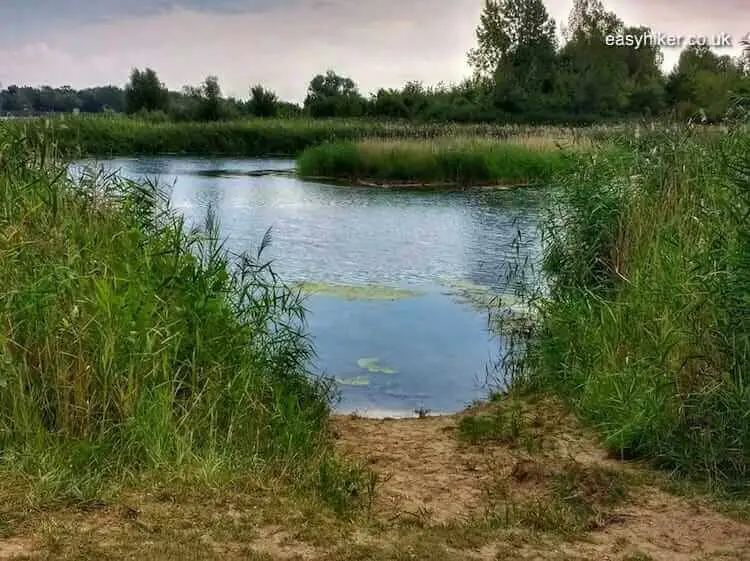
There are also benches for an improvised al fresco lunch (but be aware that you will have to bring any provisions from downtown).
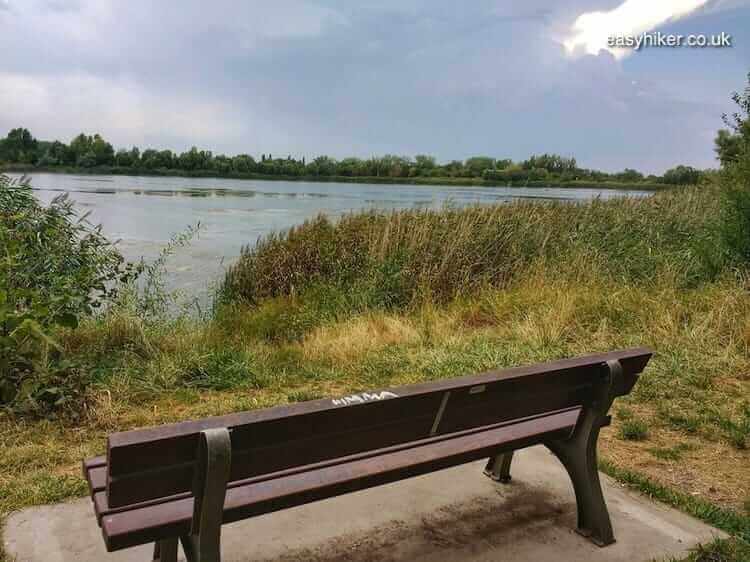
The Neustädter See provides welcome relief from the drab brutalism of central Magdeburg, but you will never forget how close you are to town – and what type of town it is that you are close to.
Relief from drab brutalism or not: the council estates that you passed on your tramway ride to the lake have not disappeared …
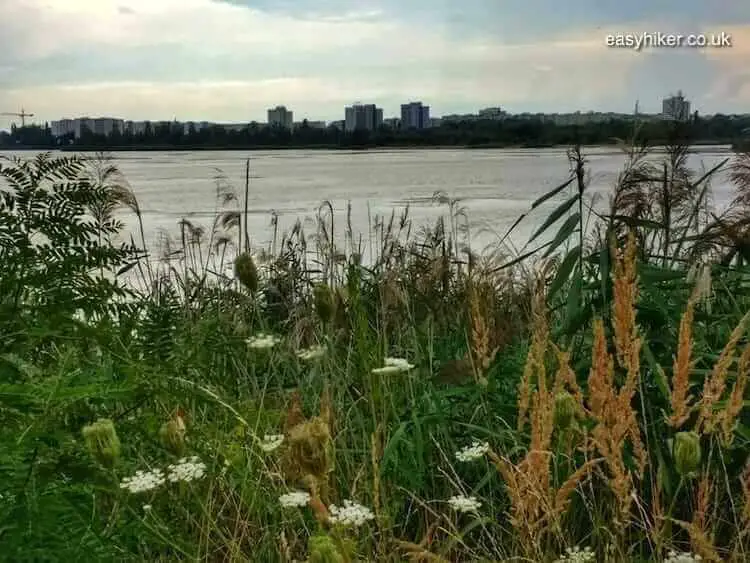
… and loom larger the closer you come to the end of your loop.
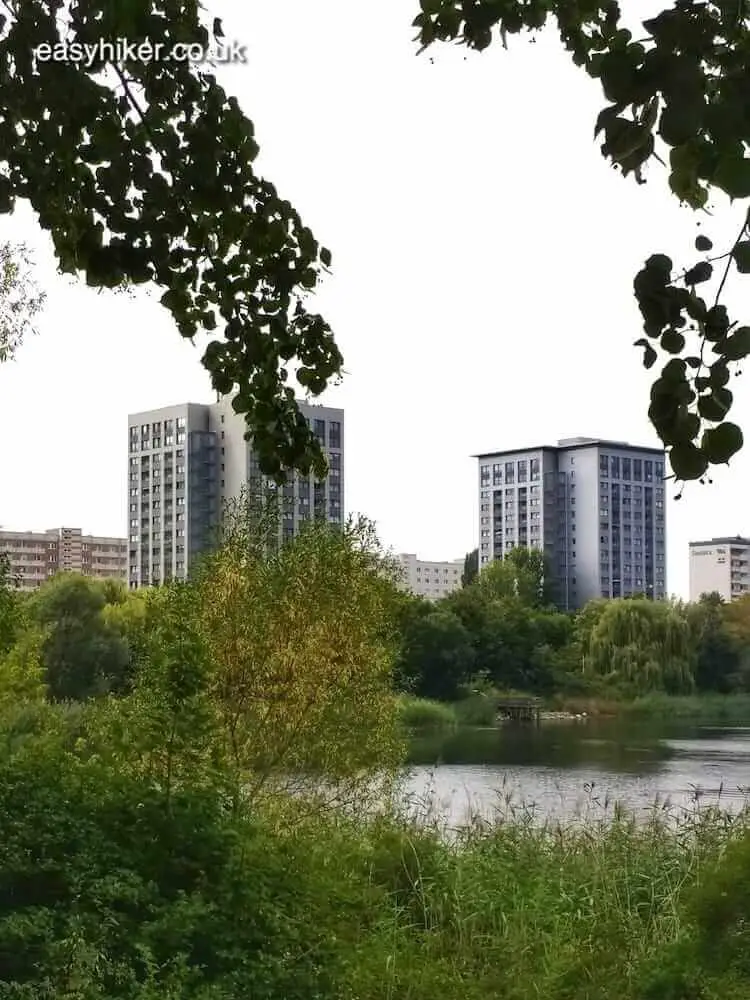
At the very end of the walk, you are rewarded by a peek into what are still typical elements of any East German suburb.
The trail passes an old-style plot of allotments with lovingly constructed dachas (holiday homes: the only private property anyone was allowed to own under the old regime). It then takes you past several rows of tower blocks – in streets that have kept their old names and are still commemorating members of the Communist International’s pantheon of saints and martyrs: Patrice Lulumba, Victor Jara, Salvador Allende.
It never ceases to amaze me how much of old East Germany is still surviving out of the town centres and commercial districts.

Alternatively to the walk around the lake, or if you have the time: in addition to it, you can also search out the Alte Elbe, a side branch of the mighty river Elbe (Germany’s third largest, smaller than only the Rhine and the Danube).
Take tram line 2 or 8 to Thiemstrasse and walk towards the river (using the walkway called An der Buckauer Fähre) to cross the Elbe by ferry.

The ferries – operated by the municipal public transport authority – circulate from April to October. There is no fixed schedule. Instead, the small boats appear to come over when their two-man crew spots someone waiting on the other side.
Once you have arrived on the Rotehorn Island, walk towards your right for a lovely stroll by the river …

… to the place where the Alte Elbe appears to branch off.

In fact, however, no real “branching off” takes place. The Alte Elbe – formerly the route that the river took on its way from Bohemia to the North Sea – is nowadays little more than a stagnant pool of water and so shallow that people can stand in its middle, only ankle deep in water.
Still, the Alte Elbe can still be quite lovely to look at.

Overall, we were rather surprised to see how much the state of Sachsen-Anhalt – not one of Germany’s strongest magnets for foreign visitors – has to offer.
If you consider a visit, you might, however, want to choose another base for your exploration of the state. Picking the town of Dessau, for example, would give you more time to visit the Bauhaus buildings, the Foundation itself and the large downtown Museum.
From Dessau, you are close to the state’s major sites (Wittenberg and the Woerlitzer Park) and, also, only one hour away by train away from Leipzig, which makes for an interesting one-day city trip.
This does not mean that we regretted having picked Magdeburg as our base. The state capital is convenient enough for that purpose – and even pretty, if you know how and from where to look at it.


